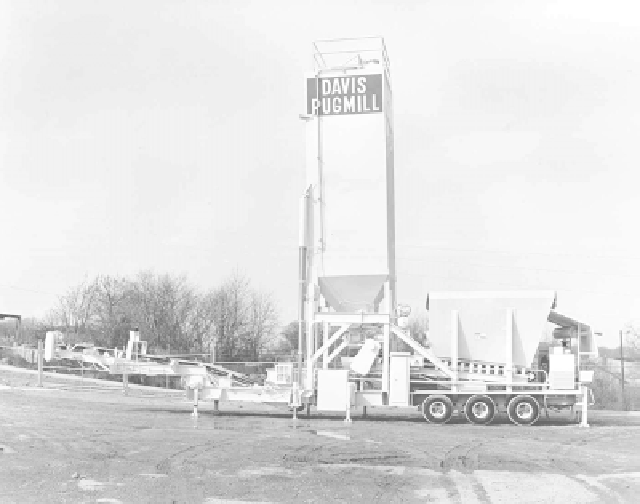Environmental Engineering Reference
In-Depth Information
FIGURE 13.8
Ex situ
mixer-based system at a TSDF.
such large batches, and waste loads would need to be broken up into several batches
for treatment. Also, loading and unloading the pit is fast and simple. Most waste
transport vehicles can dump directly into the pit, and the backhoe can quickly
excavate the treated waste from the pit, even if it has hardened. Batch cycle time is
usually in the range of 30 minutes to 2 hours.
Mixer-Based Methods
. Fixed systems of this type are essentially the same con-
ceptually as that discussed previously in Section 13.3.1. The dissimilarities are
primarily due to the permanency of the installation rather than to distinctions in the
processing method. However, fixed installations of this sort do allow more feasible
use of peripheral material handling equipment and a wider variety of chemical
additives, and they are generally enclosed to accommodate all-weather use. One
such design is shown in Figure 13.8.
13.4
CASE STUDIES
The previous discussion has laid the technical groundwork for an understanding of
the processes and techniques that make up full-scale S/S remediation projects. The
four case studies that follow are intended to provide specific examples over a fairly
wide range of waste types treated and delivery systems used. These studies include
both industrial and radioactive wastes at a variety of operational sites, but not fixed
systems at TSDFs because their technology is the same as for
ex situ
remediation
projects with mixer-based methods. Case Study #3 provides an interesting historical

Search WWH ::

Custom Search